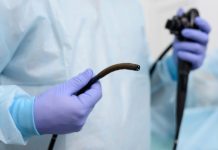The platelet-rich plasma process involves blood sample collection in a tube and then the centrifuge process. In the centrifuge process, the tube is put inside the machine and the machine spins to extract plasma and platelet from the other components in the blood. The process is simple, but can become time-consuming if proper tools, accessories, and training are not provided to the physicians and pathologists.
Plasmolifting is a fast-growing company with a huge sales network in the Russian Federation and the CIS countries. They have developed, manufactured, and supplied special PRP tubes for blood collection. They also provide PRP training to physicians who are interested in learning PRP protocols and treatment. They ship to every corner of the world except Switzerland and offer the best price to their clients.
Process of Creating Blood Components from Blood Sample
Centrifugal force is used to separate all components in blood from each other. With continuous spinning, the elements with different thicknesses precipitate in layers. A whole blood sample is placed in a large centrifuge and is spun for at least 15 minutes at a preset speed. The red blood cells settle at the bottom of the tube, then the platelets, then white blood cells, and lastly plasma at the top.
Separation of Plasma from Blood Sample
The plasma and blood are collected in separate bags using a device called the separator. The platelets and WBCs remain in the original bag. The by-products containing the platelets and WBCs are sent for the centrifuge process. A coating of leukocytes and thrombocytes is shaped. Leukocytes that cannot be used for blood transfusions are removed, leaving behind the pure concentration of platelets.
After the separation process, the plasma is frozen at -30 degrees Celsius for hours. This freezing process prevents the clotting agents in the plasma from breaking down. Once the plasma is melted for transfusion, the clotting agents reactivate.
Isolation of Platelets
During this course, a nutrient solution is added to the platelet and RBC bag so that the cells remain sustainable during storage. To prevent the activation of platelets strong shaking or spinning of the bag should be avoided. Several reagents are used for applying the isolation process of platelets. However, if the platelets are not used for tissue culture experiments, then reagents aren’t required to be sterile. Store and make use of all reagents at 4 degrees Celsius.
- ACD Buffer also known as acid citrate dextrose
- CPD buffer also known as citrate-phosphate-dextrose
- Platelet wash buffer
- HEP buffer
- Tyrode’s buffer
- 2X platelet lysis buffer
All reagents should be warmed up to room temperature maintaining a pH balance of 7.4.
Platelet-rich plasma is being used for decades for rejuvenating skin and for healing injured tissues. PRP is known for containing various growth factors, which help in the healing and renewal of tissues and bones. PRP treatment is used in plastic surgery, to stimulate hair growth, dentistry, dermatology, and tendonitis at the acromioclavicular joint.









